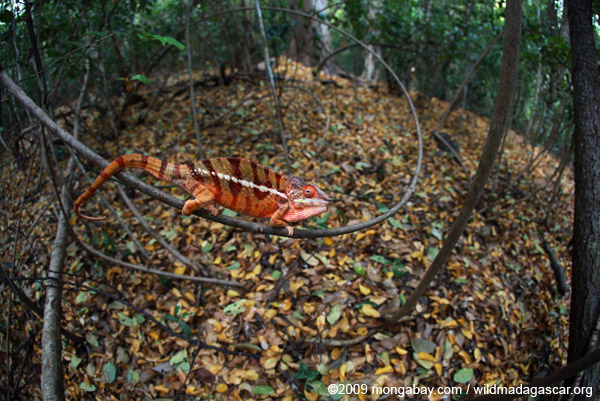The panther chameleon, a lizard prized in the pet trade for its remarkable color changing abilities, may actually represent 11 different species, report researchers writing in the journal Molecular Ecology.
Analyzing the genetics of more than 300 individual panther chameleons, Swiss and Malagasy researchers make a case that different color morphs of Furcifer pardalis may be distinct species. The researchers distilled the results into a classification key that distinguishes the potential species by coloration.
The findings are significant because they could be used to justify new conservation measures for especially threatened populations, since these are potentially distinct species. Classified as a single species, the widely distributed panther chameleon isn’t endangered. But divided into 11 species, some populations would certainly be at risk due to continuing habitat loss resulting from slash-and-burn agriculture and charcoal production as well as over-collection for the pet trade.

Panther chameleon in Ankarana, Madagascar.
“Given the charismatic nature of chameleons, besides a better understanding of the genetic basis of color variation in chameleons, the study will help to continue its difficult enterprise: raising awareness for the staggering but fragile biodiversity hosted by Madagascar,” said Michel Milinkovitch, the University of Geneva professor who led the research. Djordje Grbic was the first author on the paper.
The study’s results could also improve management of the pet trade by restricting collection of endangered populations and indicating what populations shouldn’t be crossed with each other when breeding in captivity. Other research has shown that panther chameleons from different geographic origins sometimes have low reproductive success when crossbred.






http://news.mongabay.com/2015/05/up-to-11-stunningly-colorful-chameleon-species-discovered-in-madagascar/
